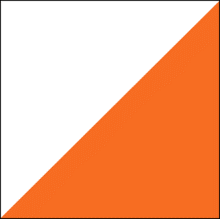FOR ORIENTEERS PROGRESSING BEYOND INTERMEDIATE LEVEL

When you are a beginner / intermediate orienteer your race analysis will typically involve diagnosing quite a range of problems and mistakes with many aspects of your navigation. As you progress you will have in mind a catalogue of things to avoid and be applying a Basic Navigation Routine and a Tool Kit of Skills, to try to ensure you are navigating reliably and effectively. You should be making less basic and easily avoidable errors and be refining your technique to save time.
Once the basics are working well, some further in depth analysis can be very beneficial.
Elevate.run
Kris Jones and Chris Smithard have developed Elevate, and together with James Errington created an online analysis method. It has been developed by elite orienteers but is applicable to a wider range of orienteering abilities.
The Elevate website introduces the Principles System as a way to systematically evaluate each leg of a race and the race overall. It offers a concise way to think through the many elements of analysing your navigation. You can then track your performance over time and focus your training on clearly diagnosed weaknesses.
| The 5 Key Principles The Principle Orienteering Process comprises 5 Key Principles Routechoice Plan Direction Picture Execution It is based on research by Kris Jones (elite orienteer and sports scientist) |
Note that, the term, Picture in the key principles, corresponds with visualisation here in Better Orienteering. e.g. are you picturing or visualising what the control will look like? (Visualisation does however have a wider role throughout a leg, see discussion in the Beyond Advanced section)
My take on this system is that each principle can be seen as a driver for a range of skills you need to implement. One benefit of using these key principles is that, once you are orienteering at a reasonable level, you will be able to think about a very large number of possible sources of time loss under just 5 categories. You can then focus on the principles that are driving your navigation rather than just the multiple symptoms that emerge as errors and time loss. This should make it easier to record what has been going on with your orienteering performance and get to the root of what you need to improve.
The Elevate system is explained very clearly on Elevate.run See the Knowledge base section
There are 2 introductory videos.
Analysing a course
Looking at the analysis results
If you find Elevate and its 5 Key Principles system helpful in analysing your orienteering, you will probably benefit from discussing the results with coaches and planning training to help you improve. It is hard to do this entirely alone and it can be very helpful to get other orienteers’ inputs into your analysis and on how to improve on any area of weakness you identify.
Other sources to help with analysis and training
O-Training.net is a useful source of training ideas
You can follow Elite orienteers’ (and many others) training logs on Attack Point
And follow their performances on World of O runners section
For UK Elites see On the Red Line
You can learn a lot from looking at the routes taken by other competitors and their GPS traces. World of Maps collection is invaluable.
Looking at interesting route choice legs and how different competitors tackled them and the analysis they offer, can give ideas to apply to your own route choice and analysis The Route to Christmas series shows how orienteering analysis can be really helpful:
For links to more websites that can help with coaching and analysis see the Useful Websites pages of Better Orienteering